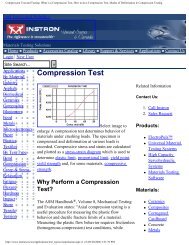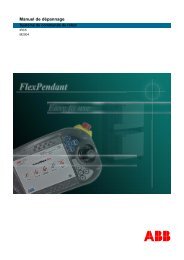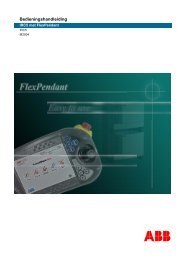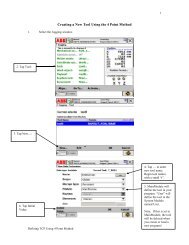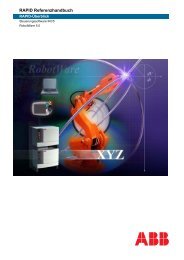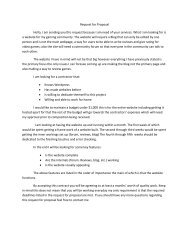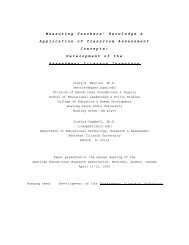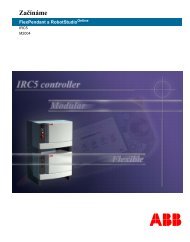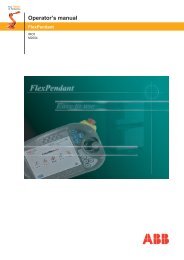Engineering a Microfluidic Device - Technology
Engineering a Microfluidic Device - Technology
Engineering a Microfluidic Device - Technology
- No tags were found...
Create successful ePaper yourself
Turn your PDF publications into a flip-book with our unique Google optimized e-Paper software.
Design Brief<strong>Engineering</strong> a <strong>Microfluidic</strong><strong>Device</strong>By Lisa GoelThis activity encourages analyticalthinking, creativity, and engineeringdesign tactics by asking studentsto design and construct amicrofluidic device.This activity integrates technology (manufacturing,material, mechanical, and biomedical engineering)art, and science for students in Grades K to 12.ContextWhat is technology? How does it affect our lives? What aresome examples of technological products? Technologicaladvances made by scientists and engineers have led toproducts such as ink jet printers, tiny cell phones, digitalcameras, laptops—and the list just goes on. So we canconclude that technology has definitely played a role ineach and every one of our lives in some way or another.Some technological products, such as those just mentioned,house small chips that store information in some form. Forexample, ink jet printers have small microfluidic chips. Thesechips are very small and are on the order of micrometers(that’s a million times smaller than a meter) and holdmicrometer volumes of fluid! Our design challenge is goingto be to create a microfluidic device.This activity encourages analytical thinking, creativity, andengineering design tactics by asking students to design andconstruct a microfluidic device. The focus here is on thestudents’ ability to implement their design and to observewhat happens when creating such a device. The goal ofthis activity is twofold: (1) to familiarize students with theengineering design process, and (2) to awaken the students’creativity and design ability towards understanding andtaking part in today’s technology.ChallengeThe engineering challenge here is for students to design,create, and implement a microfluidic device. Students shouldfocus their efforts and creativity towards understandingthe interactions between materials with different surfaces(i.e., plastics, rubbers, cardboard, poster board, etc) and • The <strong>Technology</strong> Teacher • October 2006
fluids of different consistencies (i.e., water, honey, sugarwater, molasses, etc). Critical thinking, problem solving, andanalytical skills will be put to great use in identifying andcategorizing key relations between different materials andfluids. This activity can be done individually or in groupsof no more than three students. Small groups encouragestudents to develop and share ideas in a team settingwhere they learn to work together and create a device ofmutual interest.MaterialsStudents should be encouraged to bring household items forconstruction of their microfluidic device. Items necessary areas follows: materials with different surfaces such as rubber,cardboard, poster board, hard plastics, and whatever elsestudents can find at home (they should use their creativityand find different materials). Other materials include glue,tape, scissors, and pasta. It is more important that studentsare creative about their designs and bring in items specificto their design of interest. For aesthetics, students can useglitter, buttons, various printed fabrics, and whatever theyfind necessary to add to their design.ProcedureThe engineering design process encompasses a series of stepstowards designing, constructing, testing, and redesigninga product. The first step of this design activity is to discusstechnology and the role it plays in our lives today. Visual aidsare always useful, such as cell phones, printers, laptops, etc.,and will provide students a good introduction to the designactivity. The next step is to discuss microfluidic devices,their scale, how much liquid they hold, and where they canbe found (i.e., bottom of ink jet printer cartridges will be agood visual aid for students). Teachers should then discussproperties and relations between fluids (such as water, honey,etc.) and materials of different surfaces (rubber, hard plastics,etc.). The focus here should lie in the interaction between thefluid and the material. Students should ponder answers tothe following questions: Would water run faster on rubberor hard plastic? Would honey? What material would makehoney run faster? Questions such as these will preparestudents for their first task.Working either individually or in small groups of 2-3,students should focus their attention on identifying therelationship between water and honey on different surfaces.Students should draw the microfluidic device, indicatingwhat types of materials they plan to use.Once the design is made, students should construct thedesign using dry pasta shells and their materials of choice.Cylindrical pasta shells should be vertically cut in half (Figure1) and either glued or taped to the material of the student’schoice. Once the microfluidic device is constructed, watershould be poured through the pasta shell from one end.Students should time how long it takes for the water to exitthe pasta shell. The same process should be done for thehoney. Observations should be made about the material andits interactions with water and honey.Figure 1. Cylindrical pasta shells.Analysis and RedesignStudents should present their device to the class, openingthe floor for discussion and comments from the audience(other students). Each team of students should make a list ofimprovements on their design and constructed microfluidicdevice. Through questions, teachers should guide students tothink critically about their designs through questions.Evaluation/FeedbackAt the end of the presentations, teachers should collect thestudents’ designs and newly constructed devices and createan open discussion forum in which students are encouragedto freely discuss what they and others have designed. Theteacher should also give feedback on each student’s workthroughout the activity. This exercise is useful for both theteacher and students as it provides a wrap-up to the activityand teaches students to critically analyze their work.Lisa Goel has an M.S. in Biomedical <strong>Engineering</strong>.She is currently working at a cutting-edgenanobiotechnology company, Nanobiosym, Inc.,working in <strong>Technology</strong> Operations and BusinessDevelopment. She can be reached via email atlisagoel@gmail.com. • The <strong>Technology</strong> Teacher • October 2006



